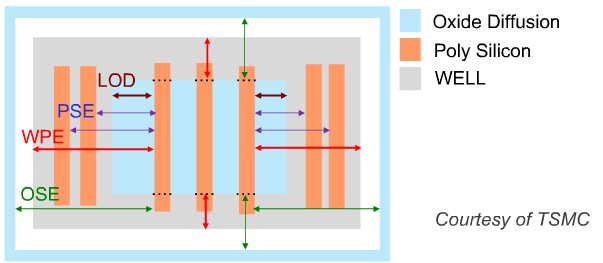Foundries and EDA vendors are cooperating at increasing levels of technical intimacy as we head to the 20nm and lower nodes. Cadence has a strong position in the EDA tools used for IC design and layout of custom and AMS (Analog Mixed-Signal) designs. They have created a series of webinars to highlight the design challenges and new approaches required. In 10 days you can learn about addressing Layout-Dependent Effects (LDE) as part II. See my blog on the part I webinar.
Interested in advanced node designs? Enhance your expertise with two new webinars from TSMC and Cadence.

Addressing Layout-Dependent Effects
At 9am and 6:30pm PDT on April 25, Manoj Chacko and Bala Kasthuri of Cadence and Jason Chen from TSMC will present, “Variation-Aware Design: Detecting and Fixing Layout-Dependent Effects Using the Cadence® Virtuoso® Platform, Part II, a sequel to Variation-Aware Design, Part I. You’ll learn about:
- The solutions jointly developed by Cadence and TSMC, to provide a complete layout-dependent effect (LDE) flow for circuit and layout designers working at 28nm and below
- When, why, and how you should incorporate TSMC’s LDE-API with Cadence Virtuoso tools into an analog, custom, or mixed-signal design flow to achieve the most efficient design cycle time
Managing Design Complexity at 20nm
At 9am and 6:30pm PDT on May 23, Rahul Deokar and John Stabenow of Cadence and Jason Chen from TSMC will present, “20nm Design Methodology: A Completely Validated Solution for Designing to the TSMC 20nm Process Using Cadence Encounter®, Virtuoso, and Signoff tools.” You’ll learn about:
- The TSMC-Cadence solutions in the TSMC 20nm Reference Flow, tools certification, and Cadence tools and methodology to enable 20nm design with double patterning technology (DPT)-aware capabilities, to reduce design complexities and deliver required accuracy
- How in-design DPT and design rule checking (DRC) can improve your productivity
- How both colored and colorless methodologies are supported, and data is efficiently managed in front-to-back design flows
- How local interconnect layers, SAMEMASK rules, and automated odd-cycle loop prevention are supported
- How mask-shift modeling with multi-value SPEF is supported for extraction, power, and timing signoff







Comments
There are no comments yet.
You must register or log in to view/post comments.